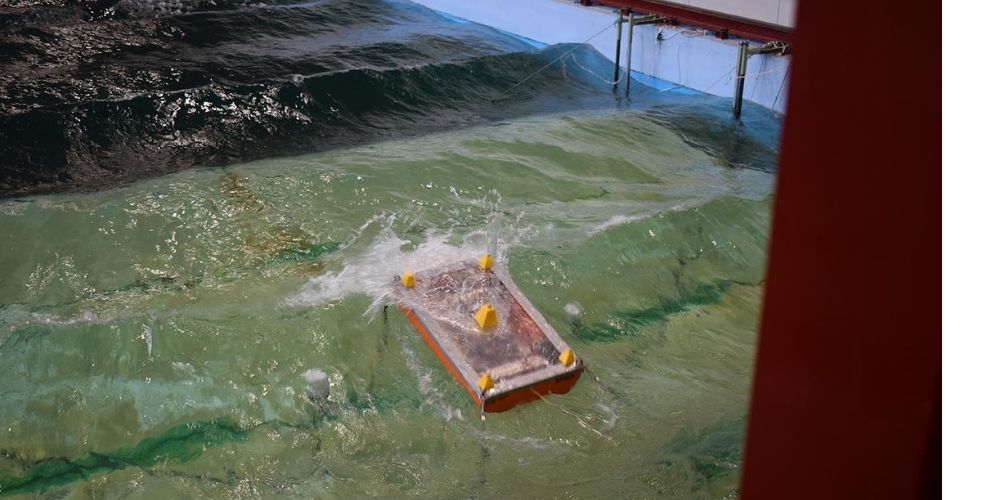
Last Thursday, Italy successfully piloted a model converter that can convert sea waves into electrical energy. The aim is to have the first converters in use on the Mediterranean within 2025. Italy plans to use this form of energy primarily to make Capri and over 70 other Italian islands self-sufficient in terms of energy. We spoke with Gianmaria Sannino (52), head of the climate modeling laboratory at ENEA, a research institute of the Italian government.

What was the nature of the experiment?
“We tested a prototype at a scale of 1:25 inside a hydrographic test basin. The model comprises a square hull with anchor points, which operates according to an oscillating system whereby the waves drive a turbine. The main purpose of the test was to study how the hull and anchors would react to extreme waves. We exposed the unit to a series of high waves of up to ten meters, both regular and irregular, that were artificially generated in the test basin.”
What did the experiment yield?
“We are very pleased with it because the electrical power of the system continued to run without a hitch even under extreme conditions. While we had run computer experiments on it beforehand, an experiment in a test basin is not the same. What has been especially fundamentally important is that we have gleaned new information on the level of hardness of the equipment and inputs on the costs involved.”
Why is the level of hardness important?
“The concept of wave energy is very simple, but it is a challenge to design the equipment in such a way that it does what we want it to do and doesn’t get thrown off course by any high swells. Therefore, on the one hand, you need a contraption that is elastic enough to ride the waves well, but on the other hand, it must be hard enough so that it stays in place on the sea’s surface. It seems that we have found that middle ground.”
What material is the wave turbine made of?
“There’s not much that I can say about that yet. The best option is non-oxidizing iron, but that is expensive. Reinforced cement is another option. It is an important issue because material is a big part of the cost. Wave energy is all about the costs.”
What costs are involved in wave energy?
“The European Commission is seeking to ensure that by 2030, the costs for energy generated from tidal power will not exceed 15 cents per kWh. If the costs are higher, then there is effectively no future for this technology. The reason Italy is pursuing to have electricity on our islands generated mainly by wave energy also has to do with the fact that electricity on islands is more expensive because it has to be brought in from the mainland.”
What is the next step?
“Testing at sea. The design for a 1:2 scale model is there. That is not the point. The problem is funding right now. Fortunately, wave and tidal energy is one of the technologies that Italy is willing to invest in. That’s also what it says in the Italian report when it comes to the framework of financing from the Next Generation EU fund, among others. We hope for the best. Generally speaking, the European Commission wants at least 10% of Europe’s energy needs to come from marine energy by 2050.”
Is Italy a forerunner when it comes to wave energy?
“We are doing really well. In Europe, 127 projects are currently being funded in the area of wave and tidal energy, but most are not at a mature stage just yet. We are already further along, even if we have still yet to make our debut in the field. In any event, they are further along in the North Atlantic. The European Marine Energy Centre (EMEC) is based in Scotland for good reason. ENEA and other Italian research institutes working on this do see something in the creation of a similar EMEC around the Mediterranean.”
Aren’t large gulf stream converters on the open sea a hazard to maritime shipping?
“No, that’s not the problem. The biggest dilemma is and remains the stability of the converters in extreme weather conditions and that energy production is not interrupted.”
Where will these kinds of “platforms” end up being located?
“In places as far from the coast as possible, where the seabed is no deeper than 60 meters. Therefore, also not too far offshore from the mainland.”
An impression of the test setup can be seen on the following video:
Also read an interview with the founder of tidal energy and about Italian government plans for ‘green islands.’


